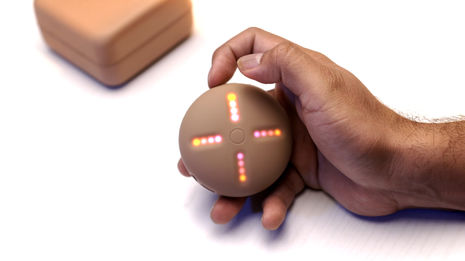The Ye-ast of thoughts and mind: Kanye’s STEM player and the future of music streaming
Editor Jacob Tucker considers the STEM player, Kanye’s latest attempt to revolutionise the music industry

You know who Kanye West (now known officially as Ye) is. He’s spent his career making sure of that fact, elevating himself as a brand to the point where his media personality has eclipsed his music. He dropped Donda in August 2021, yet the resultant stench of anticlimax could not pervade the nostrils of the public more than his well-documented split with Kim Kardashian or his rivalry with Drake. Even if Ye is an artist who has superseded his art, his musical downfall has been a sight to behold.
Donda was an improvement on 2019’s Jesus is King, but only a slight one, and Donda 2, which was released as an unfinished product on Ye’s STEM player in February this year, has seen him fall to perhaps his lowest point yet.
So, what is the STEM player? Well, it’s a toy, akin to the electric keyboards kept in the music department of every primary school – one button for Für Elise, another for a shout of “DJ!” etc, etc – only the STEM player will not allow a proficient musician to play any song they happen to know: rather, any user is curtailed to the same 39 songs, all of them tracks by Ye himself. The player allows a user to split any of the 39 pre-loaded songs into “stems”; these can then be customised and manipulated with buttons and sliders. Not only is it a toy, but it’s an expensive one. Every track currently available on the system will set you back around £4, with a $200/£160 price tag overall.

You cannot currently upload your own songs to the player, and Ye, being Ye, is unlikely to ever relent on this front. Donda 2 was released solely on the STEM player. If Donda 2 had been an album worth listening to in the first place, this might have been a tragedy for fans of Ye who can’t afford to – or who would be understandably reticent to – throw £160 away on a gimmick: as it is, the tragedy of the device is in its foreshadowing. In treating the STEM player as a one-time payment streaming service for Ye’s music, a new realm of discussion is opened up to us.
“Might vinyl collections be replaced by stacks of STEM players collecting dust on dedicated shelves? It seems unlikely”
Is the decentralisation of music inevitable? Realistically, a large service like Apple Music or Spotify could move towards service-exclusive albums. If the highly anticipated upcoming Kendrick Lamar album were only released on Apple Music, what implications would there be? Apple Music would, no doubt, see an increase in subscriptions. Many Kendrick fans would make the switch from other services just to access his newest release. Other streaming services like Disney+ have recently relied on similar business models, boosting subscriptions with single shows like The Mandalorian. Netflix, Amazon Prime, Hulu, and HBO Max are all popular unto themselves, and many users who use one streaming service will subscribe to at least one other.
Is there not a potential future where every major artist assigns themselves to a company in the manner of a studio label? Where every listener must own multiple streaming subscriptions in order to access their entire catalogue? In 20 years, is there not a possibility that every major artist will use the STEM player business model and produce a single-pay device which can be updated with each album cycle? Might vinyl collections be replaced by stacks of STEM players collecting dust on dedicated shelves? It seems unlikely.
In tying his player to Donda and Donda 2, a pair of his weakest albums, Ye made a poor if his intention was to revolutionise music with this over-priced device. And yet, even without this hang up, the STEM player was never going to fly.
“Ye’s recent downward spiral, both musically and personally, forged this rather pathetic device”
First off, it’s an investment. Even the most avid Ye fan is going to think twice about the price tag, taken in consideration with the device’s limitations. And, even without the price tag, buying the player requires an active choice to adopt a technology still in its infancy. In the next five years, Apple Music or Spotify might well decide to develop a similar device – if this alternative could perform the same functions but for the entire catalogue of either service, it would serve as the death knell for the STEM player.
Listeners also want their entire catalogue of music easily accessible in one place: this desire is antithetical to the player, as well as the decentralisation of streaming services more generally.
Ultimately, the STEM player was something of a pipe dream. It was a clever idea executed incredibly poorly. A device which could take any given song and separate it into the same “stems” would be a far more valuable product, and yet it would rely on streaming services remaining as centralised as they currently are. Ye’s recent downward spiral, both musically and personally, forged this rather pathetic device: and yet, with the firmer hand of a large streaming service behind the wheel, an adapted and more expansive service could prove revolutionary for the music industry.
 News / Night Climbers call for Cambridge to cut ties with Israel in new stunt15 April 2024
News / Night Climbers call for Cambridge to cut ties with Israel in new stunt15 April 2024 News / Cambridge University cancer hospital opposed by environmental agency12 April 2024
News / Cambridge University cancer hospital opposed by environmental agency12 April 2024 Features / Cambridge’s first Foundation Year students: where are they now?7 April 2024
Features / Cambridge’s first Foundation Year students: where are they now?7 April 2024 Comment / UK universities are sacrificing widening access for foreign fees11 April 2024
Comment / UK universities are sacrificing widening access for foreign fees11 April 2024 Film & TV / Dune: Part Two is a true epic for the ages11 April 2024
Film & TV / Dune: Part Two is a true epic for the ages11 April 2024




